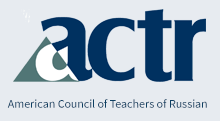Russian Language Journal
Keywords
K-16 Russian enrollment trends, school-to-college articulation, Russian Flagship, access to advanced language training
Abstract
Based on the American Councils-administered K-16 National Survey of Foreign Language Enrollments (2017), the present study examines emerging trends in enrollments and the availability of Russian language instruction at the state and national levels. K-12 and tertiary institutional data are examined in light of comparable information collected in 2007. The study found a continued close association between the geographical location of Russian K-12 offerings and the distribution of Russian-speaking households reported in the US Census. Nationally, Russian language enrollments increased by 20% between 2007 and 2016 among K-12 institutions to 14,876 with 31 states and the District of Columbia reporting state-level increases, 18 showing a decrease, and one state indicating no change. By comparison, higher education Russian enrollments declined by 20% over the same period to 21,353. Overall Russian ranks third among the less commonly taught languages at both the university and K-12 levels. The study also reports district-level and senior administrator responses regarding factors which inform decisions to offer Russian (and other languages), examples of innovative approaches to school-to-college articulation, and benefits noted from increasing access to advanced language and cultural training, as exemplified in the Russian Language Flagship.
Recommended Citation
Davidson, D. E., & Garas, N. (2020). Emerging Trends in the Study of Russian in the US: K-16 Enrollments 2007 to 2016. Russian Language Journal, 70(1). https://doi.org/10.70163/0036-0252.1035


